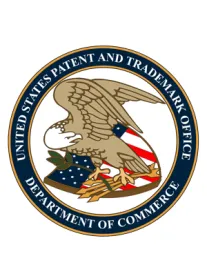In a case centered about patent that matured from an application filed 40 years ago, a case that has been pending for 12 years and that just completed its fourth engagement at the appellate level, the U.S. Court of Appeals for the Federal Circuit concluded that the defendant’s sale of vascular grafts made of Gor-Tex willfully infringed Bard’s patent. Bard Peripheral Vascular Inc. and C.R. Bard, Inc. v. W.L. Gore & Associates, Inc., Case No. 14-1114 (Fed. Cir., Jan. 13, 2015) (Prost, C.J.) (Hughes, J., concurring) (Newman, J. dissenting).
In the present appeal, two issues were presented: Gore’s standing and the district court’s imposition of a willful infringement multiplier.
Standing
Gore argued that since the named inventor of the patent-in-suit, Goldfarb, never assigned the patent to Bard in a written instrument, it had no standing to sue. Gore’s assertion was that Goldfarb granted Bard all substantial rights to the patent—resulting in a “virtual assignment,” even though there was no writing to that effect. Although this issue was peripherally raised in a prior appeal, the Federal Circuit took a new look and concluded that (§261 notwithstanding) the absence of a written instrument was not fatal since the original grant was an exclusive license with a right to sue for infringement—a grant that need not be reduced to writing. When challenged on standby by Gore in the district court, Bard established that the exclusive license grant (which included revisionary right to Goldfarb and field of use restrictions) was not a “virtual assignment” and was therefore not subject to the written instrument requirement of §261. The Federal Circuit found no error in the district court’s analysis.
Willful Infringement
In order to establish willful infringement, a patent owner must prove, by clear and convincing evidence, an objective threshold test, that the infringer acted despite an objectively high likelihood that its actions constituted infringement of a valid patent. In re Seagate Tech. This is sometimes referred to as the objective threshold test.
The second prong of the Seagate inquiry is subjective and looks at whether the objective risk was either known or so obvious that it should have been known to the accused infringer. Even though the second prong is subjective, it does involve an “objective assessment” of the strength of the accused infringer’s defenses. In its most recent prior decision in this case, the Federal Circuit set a new standard for proving willfulness, explaining that the question of whether there was an objective risk of infringement is one to be decided by a court, not a jury. The Federal Circuit then remanded the case to the district court to consider, in the first instance, whether Gore had raised a “substantial question” as to validity or non-infringement. After the district court found Gore’s defenses were not objectively reasonable, this appeal followed.
On appeal, the panel rejected, based largely on its ruling on the issues presented in the earlier appeals, that Gore’s arguments as to each of its defenses were not objectively reasonable, the dissenting opinion by Judge Newman in these appeals notwithstanding.
Judge Hughes concurred in the decision based on the de novo review standard, but wrote separately to suggest that in view of the Supreme Court 2014 decisions in Highmark and in Octane Fitness it was time for the Federal Circuit to reconsider, en banc, the de novo review standard for willfulness. In Hughes view, “[a] more deferential standard of review would be consistent with the standards for reviewing mixed questions of law and fact in other contexts.”
As she did in the last two Federal Circuit decisions in this saga, Judge Newman voiced a strong dissent, arguing that the majority simply parroted the district court’s finding without conducting a de novo review and failed to consider Gore’s reasonable defenses as obviating the objective prong of the willfulness inquiry. Rather, in Newman’s view, the panel simply searched out and repeated any adverse evidence it could find. Newman also dissented from the Court’s affirmance of the district court’s doubling of the damage award, arguing that even where willfulness is found, “it does not follow that punitive damages must be imposed.” Here, Newman argues that the Court failed to consider the many medical benefits and public interest imparted by Gore’s products, factors she argues “cannot be reconciled with the punitive doubling of damages.”
Practice Note: Gore has now petitioned the Federal Circuit to reconsider, en banc, whether the panel utilized the correct, de novo, standard of review (an echo of Judge Newman’s dissent that argued it did not) and further argued that notwithstanding the standard of review, the district court’s finding of objective recklessness should it be reversed.




 />i
/>i
